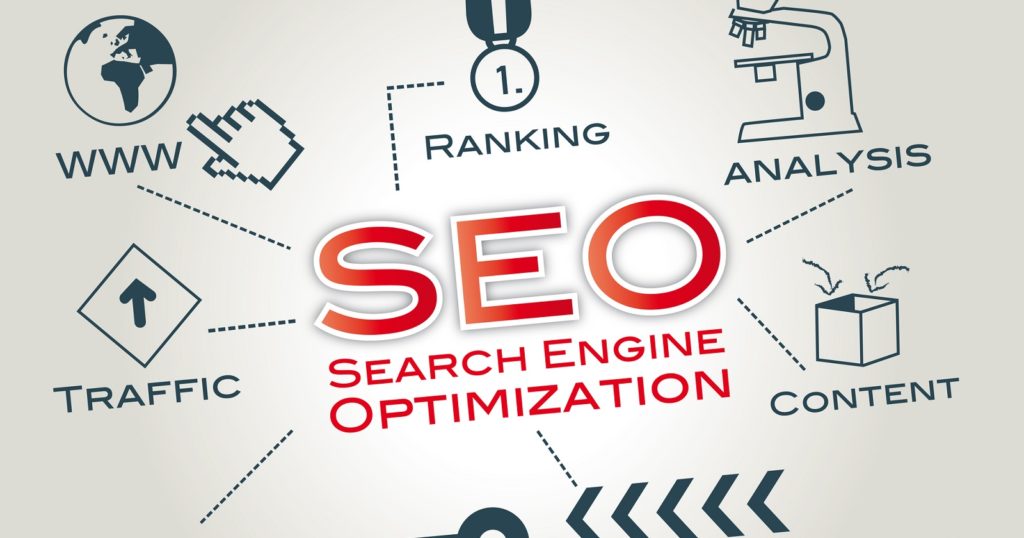How to Start & Create a Website or Blog: A Complete Beginner’s Guide

Creating a website or blog can be an exciting and rewarding experience. Whether you want to build a personal platform to share your thoughts or a professional website for your business, knowing how to create a website or blog is essential. This comprehensive guide will walk you through the entire process, covering everything from choosing the right platform and hosting to designing your site and optimizing it for search engines. By the end of this guide, you’ll have a solid understanding of how to create a website or blog from scratch and make it successful.
1. Choose the Right Platform
When it comes to creating a website or blog, one of the first decisions you’ll need to make is which platform to use. There are many options available, but the two most popular choices are Content Management Systems (CMS) and Website Builders. Each has its own advantages and disadvantages, so it’s essential to understand their differences before making a decision.
Content Management Systems (CMS)
A Content Management System (CMS) is a software application that allows you to create, manage, and publish content on your website. One of the most popular CMS platforms is WordPress, which powers over 42% of all websites on the internet. Other popular CMS options include Joomla and Drupal.
CMS platforms are typically more flexible and scalable than website builders, allowing you to create a wide range of websites, from simple blogs to complex eCommerce stores. They also often have large communities and extensive libraries of plugins and themes, making it easy to extend your website’s functionality and customize its design.
The downside of using a CMS is that they can have a steeper learning curve, especially for users with little to no technical experience. However, with the right resources and tutorials, most people can learn how to create a website or blog using a CMS.

Website Builders
Website builders are online tools that make creating a website quick and easy, even for users with no technical experience. They typically offer a user-friendly, drag-and-drop interface and a variety of pre-built templates to help you design your site. Some popular website builders include Wix, Weebly, and Squarespace.
Using a website builder is an excellent option for beginners who want to create a website for free or with minimal upfront costs. They’re also a good choice for users who don’t need the advanced features and customization options offered by a CMS.
However, website builders can be more limited in terms of flexibility and scalability compared to CMS platforms. Additionally, they may not offer as many plugins or extensions, which could limit the functionality of your website.
2. Get a Domain Name and Hosting
Once you’ve chosen your platform, the next step in creating a website or blog is to get a domain name and web hosting. Your domain name is the web address that people will use to find your website (e.g., www.example.com), while web hosting is the service that stores your website’s files and makes them accessible to users on the internet.

Choosing a Domain Name
Selecting the right domain name is crucial for your website’s success. It should be memorable, easy to spell, and represent your brand or the content of your website. Here are some tips to help you choose the perfect domain name:
- Keep it short and simple: Aim for a domain name that is easy to remember and type. Avoid using long, complicated words or phrases that could be misspelled or confusing.
- Use relevant keywords: Including keywords related to your website’s content can help improve your search engine rankings and make it easier for users to find your site.
- Choose the right domain extension: The most common domain extension is .com, but there are many other options available, such as .net, .org, or even country-specific extensions like .co.uk. Consider which extension best suits your website’s purpose and audience.
- Check availability on social media platforms: Before registering your domain name, make sure it’s available on the social media platforms where you plan to build a presence. This can help improve brand consistency and make it easier for users to find you across different platforms.
To register your domain name, you’ll need to use a domain registrar, such as GoDaddy or Namecheap. Many web hosting providers, including Hostinger, also offer domain registration services, often with a free domain included for the first year.
Selecting a Web Hosting Plan
Choosing the right web hosting plan is essential for your website’s performance, security, and scalability. There are several types of web hosting to choose from, including shared hosting, Virtual Private Server (VPS) hosting, and dedicated hosting. The best option for you will depend on your website’s needs and your budget.

For beginners and small to medium-sized websites, shared hosting is a cost-effective and user-friendly option. With shared hosting, your website shares server resources with other websites, which can help keep costs low. Hostinger offers affordable shared hosting plans starting at just $1.99 per month, with features like free SSL certificates, email accounts, and unlimited bandwidth.
For larger websites or those with more advanced needs, VPS or dedicated hosting may be a better option. These plans provide you with dedicated server resources, giving you more control and flexibility over your website’s performance. Hostinger offers VPS hosting plans starting at $3.99 per month, with features like dedicated IP addresses and 24/7 live chat support.
When selecting a web hosting plan, be sure to consider factors like cost, storage and bandwidth limits, security features, and customer support. Don’t forget to take advantage of any discounts or special offers that may be available to help reduce your overall costs.
3. Design Your Website or Blog
After setting up your domain and hosting, the next step in creating a website or blog is to design your site. This will involve selecting a theme or template, customizing the design to match your brand, and adding any necessary visual elements like logos and images.
Selecting a Theme or Template
Both CMS platforms like WordPress and website builders offer a wide variety of themes and templates to choose from. These pre-built designs can help you create a professional-looking website without any design or coding skills.

When selecting a theme or template, consider factors like:
- The overall style and aesthetic: Choose a design that matches your brand or the content of your website.
- Customization options: Look for themes that offer a high level of customization, allowing you to easily modify colors, fonts, and other design elements.
- Responsiveness: Ensure that the theme is mobile-friendly and will look great on devices of all sizes.
- Compatibility: If using a CMS like WordPress, make sure the theme is compatible with the latest version of the platform and any plugins you plan to use.
Customizing the Design
Once you’ve chosen a theme or template, it’s time to customize the design to make it truly your own. This could involve changing colors and fonts, modifying the layout, and adding your own images and other visual elements.
If using a CMS like WordPress, you can customize your theme using the built-in Customizer tool, which allows you to make changes to your site’s design in real-time. Alternatively, you can use a page builder plugin like Elementor or Beaver Builder to create custom layouts and designs using a drag-and-drop interface.
For website builders like Wix or Weebly, the customization process is typically more straightforward and involves using their built-in design tools to modify your site’s appearance.
Creating a Logo
A professional logo can help establish your brand and make your website more memorable to visitors. If you don’t already have a logo, there are several tools and services available to help you create one, such as:
- Canva: A free online design tool that offers a variety of logo templates and customization options.
- Adobe Illustrator: A professional vector graphics editor that’s ideal for creating high-quality logos and other design elements.
- Hostinger’s AI Logo Maker: An artificial intelligence-powered tool that can help you create a unique and professional logo in minutes.
When designing your logo, consider factors like color, typography, and symbolism. Aim for a design that’s simple and easy to recognize, and make sure it’s scalable so it looks great at different sizes.
4. Add Content and Pages

With your website’s design in place, it’s time to start adding content and creating pages. Depending on the purpose of your website or blog, you may need to create several different types of pages, such as:
- Homepage: This is the first page visitors will see when they arrive at your website. Make sure it’s visually appealing, informative, and easy to navigate.
- About Page: Use this page to provide more information about yourself or your business. This could include your background, experience, or mission statement.
- Blog Page: If you’re planning to create a blog, you’ll need a page where you can display your latest posts. This could be a separate page or integrated into your homepage.
- Products or Services Page: If you’re selling products or offering services through your website, create a dedicated page to showcase your offerings and provide more information.
- Contact Page: Make it easy for visitors to get in touch with you by providing a contact form or other contact information, such as your email address, phone number, or social media profiles.
When creating pages and adding content, keep the following tips in mind:
- Focus on quality: Write well-researched, informative, and engaging content that provides value to your readers.
- Optimize for SEO: Include relevant keywords in your content and use proper heading tags, meta titles, and descriptions to improve your site’s search engine rankings.
- Make it easy to read: Break up large blocks of text with headings, bullet points, and images to make your content more visually appealing and easier to digest.
5. Optimize Your Website for SEO

Search engine optimization (SEO) is the process of optimizing your website to rank higher in search engine results pages (SERPs). This can help drive more organic traffic to your site and improve its overall visibility. Here are some essential SEO tips to keep in mind when creating your website or blog:
Keyword Research
Perform keyword research to identify the most relevant and high-traffic keywords related to your website’s content. Tools like Google Keyword Planner, SEMrush, and Ahrefs can help you find the best keywords to target and provide valuable insights into search volume, competition, and more.
Once you’ve identified your target keywords, be sure to incorporate them into your site’s content, meta titles, descriptions, and URLs. However, avoid keyword stuffing and focus on creating high-quality, informative content that provides value to your readers.
On-Page SEO
On-page SEO refers to the optimization of individual pages on your website to improve their search engine rankings. Some key on-page SEO factors to consider include:
- Using proper heading tags (H1, H2, H3, etc.) to structure your content and make it easier for search engines to understand.
- Including relevant keywords in your content, meta titles, and descriptions.
- Optimizing your URLs to be descriptive and keyword-rich.
- Adding alt text to your images to help search engines understand their content and context.
Off-Page SEO
Off-page SEO focuses on building your website’s authority and credibility through external factors, such as backlinks, social signals, and online reviews. Some effective off-page SEO strategies include:
- Building high-quality backlinks from relevant and authoritative websites.
- Promoting your content on social media platforms to drive more traffic and engagement.
- Encouraging online reviews and testimonials from satisfied customers or clients.
6. Integrate Social Media

Social media can be a powerful tool for promoting your website or blog and driving more traffic to your site. By integrating social media into your website, you can make it easy for visitors to share your content and connect with you on various platforms.
Adding Social Sharing Buttons
One of the simplest ways to integrate social media into your website is by adding social sharing buttons to your content. These buttons allow visitors to easily share your content on platforms like Facebook, Twitter, Pinterest, and more, increasing its reach and visibility.
Many CMS platforms and website builders offer built-in social sharing features or plugins that make it easy to add these buttons to your site. For example, if you’re using WordPress, you can use plugins like Social Warfare or AddThis to add social sharing buttons to your site.
Linking to Your Social Media Profiles
In addition to adding social sharing buttons, you should also link to your social media profiles from your website. This can help visitors find and follow you on various platforms, increasing your online presence and engagement.
Consider adding social media icons to your website’s header, footer, or sidebar, and linking them to your profiles on platforms like Facebook, Twitter, Instagram, LinkedIn, and more. Many themes and templates offer built-in social media icon options, or you can use plugins or widgets to add them to your site.
7. Add Essential Features and Plugins
Depending on the purpose of your website or blog, you may need to add various features and functionality to enhance its usability and performance. This could include things like contact forms, analytics and tracking tools, and security and backup features.
Here are some popular plugins and tools to help you add essential features to your website:
Contact Forms
Contact forms make it easy for visitors to get in touch with you directly from your website. Many CMS platforms and website builders offer built-in contact form features or plugins that can be easily added to your site. For example, if you’re using WordPress, you can use plugins like Contact Form 7 or WPForms to create customizable contact forms.
Analytics and Tracking
To monitor your website’s performance and gather valuable insights into your visitors’ behavior, it’s important to integrate analytics and tracking tools into your site. Google Analytics is a popular, free tool that provides detailed information about your website’s traffic, user demographics, and more. You can also use plugins like MonsterInsights to easily add Google Analytics to your WordPress site.

Security and Backups
Keeping your website secure and regularly backing up your data is essential to protect your site and its content. Many web hosting providers offer built-in security features, such as SSL certificates and automated backups, to help keep your site safe. You can also use plugins like Wordfence for WordPress to enhance your site’s security and UpdraftPlus for regular backups.

8. Monetize Your Website or Blog
Once your website or blog is up and running, you may want to explore ways to monetize it and generate revenue. There are several methods available, depending on your website’s content and audience:
Affiliate Marketing
Affiliate marketing involves promoting products or services from other companies and earning a commission for each sale or lead generated through your website. You can join affiliate programs like Amazon Associates, ShareASale, or CJ Affiliate to find products and services to promote on your site.
To succeed with affiliate marketing, focus on promoting products that are relevant to your website’s content and audience, and provide genuine value and information to your readers.
Selling Products or Services
If you have products or services to sell, you can create an eCommerce store or dedicated product pages on your website. This can be done using platforms like WooCommerce for WordPress or built-in eCommerce features in website builders like Wix or Squarespace.
Consider offering digital products like eBooks, online courses, or membership access to exclusive content, as these can be especially profitable and easy to manage.
Display Advertising
Display advertising involves placing ads on your website, typically in the form of banner ads or sponsored content. You can join ad networks like Google AdSense or Media.net to display ads on your site and earn revenue based on the number of clicks or impressions generated.

Ensure that the ads displayed on your site are relevant and non-intrusive, as excessive or poorly placed ads can negatively impact your user experience and search engine rankings.
9. Maintain and Update Your Website
Creating a website or blog is just the beginning – to ensure its long-term success, it’s essential to regularly maintain and update your site. This includes:
Regular Content Updates
Consistently publishing fresh, high-quality content is crucial for keeping your audience engaged and driving traffic to your site. Aim to update your blog or add new content to your site at least once a week, and focus on providing value and information to your readers.
Website Maintenance and Backups
Regularly perform website maintenance tasks like updating your CMS or website builder, plugins, and themes to ensure your site’s security and performance. Additionally, make sure to regularly back up your site’s data to protect against data loss or security breaches.
10. Promote Your Website or Blog

Once your website or blog is live, it’s essential to promote it and drive traffic to your site. There are several strategies you can use to increase your website’s visibility and reach, including:
Social Media Marketing
Promote your content on social media platforms like Facebook, Twitter, Instagram, and LinkedIn to reach a wider audience and drive more traffic to your site. Be sure to engage with your followers, respond to comments, and share content from other users to build relationships and grow your online presence.
Email Marketing
Build an email list and send regular newsletters or updates to your subscribers to keep them engaged and informed about your website’s content. You can use email marketing platforms like Mailchimp or ConvertKit to manage your list and create professional-looking email campaigns.
Guest Posting and Collaboration
Reach out to other websites or blogs in your niche and offer to write guest posts or collaborate on content. This can help you build relationships, gain exposure, and drive more traffic to your site. Be sure to provide high-quality, valuable content and include a link back to your website in your author bio or within the content itself.
By following this comprehensive guide, you’ll be well on your way to creating a successful website or blog. Remember to choose the right platform, invest in a memorable domain name and reliable hosting, design a user-friendly site, and regularly update and maintain your website. With dedication and persistence, you can achieve your online goals and enjoy the rewards of a thriving web presence.














